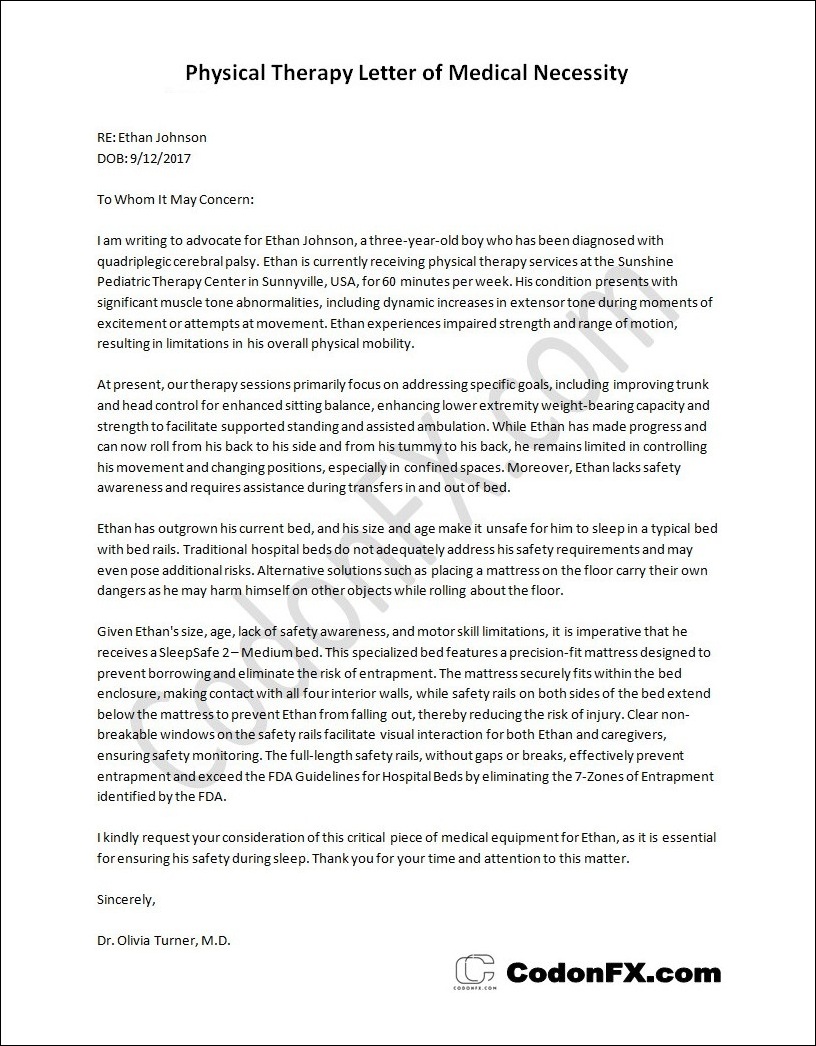
What is a physical therapy letter of medical necessity?
A physical therapy letter of medical necessity is a formal document that outlines the need for physical therapy treatment for a patient. It is typically written by a healthcare provider, such as a doctor or therapist, and is sent to the insurance company to justify the medical necessity of the proposed treatment.
The purpose of this letter is to provide evidence and reasoning as to why the patient requires physical therapy and how it will benefit their overall health and well-being.
This letter serves as a crucial tool in obtaining insurance coverage for physical therapy services. It helps the insurance company understand the specific medical conditions or diagnoses that necessitate physical therapy and the expected outcomes of the treatment. By clearly articulating the medical necessity, it increases the chances of approval for coverage. The letter also highlights the qualifications and credentials of the healthcare provider, which adds credibility to the recommendation.
The benefits of a physical therapy letter of medical necessity are manifold.
- It ensures that patients receive the appropriate and necessary care by helping insurance companies understand the medical need for physical therapy.
- It also helps patients avoid unnecessary delays or denials of coverage.
- The letter provides a comprehensive overview of the patient’s condition, treatment plan, and expected outcomes, which can aid in communication and coordination among healthcare providers.
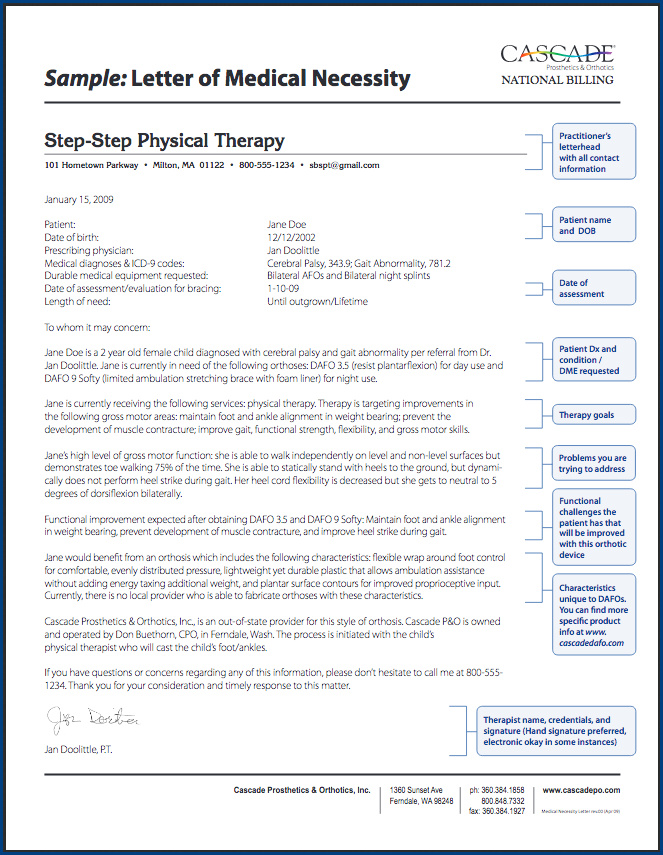
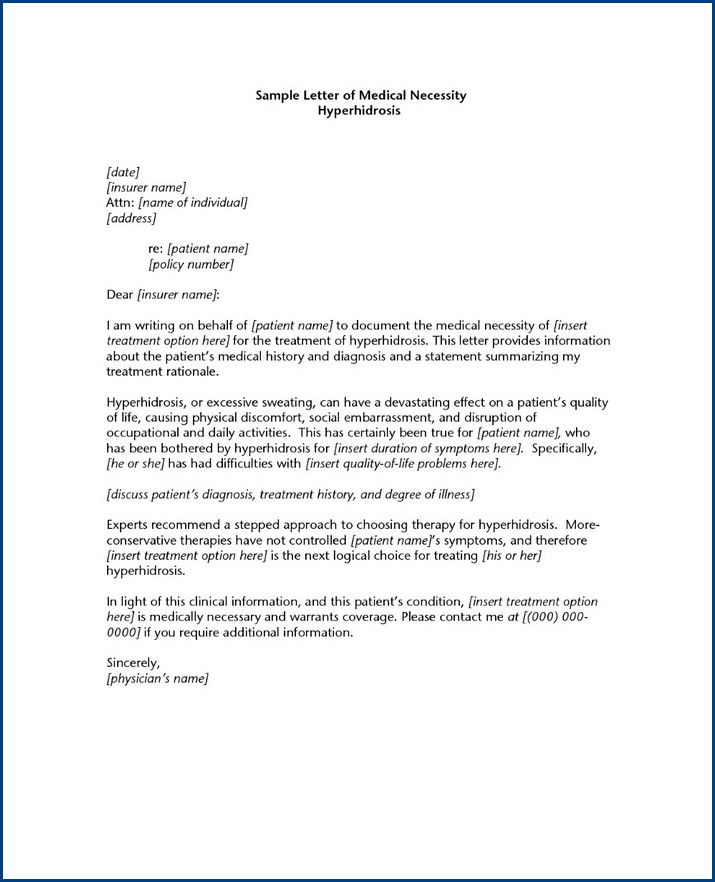
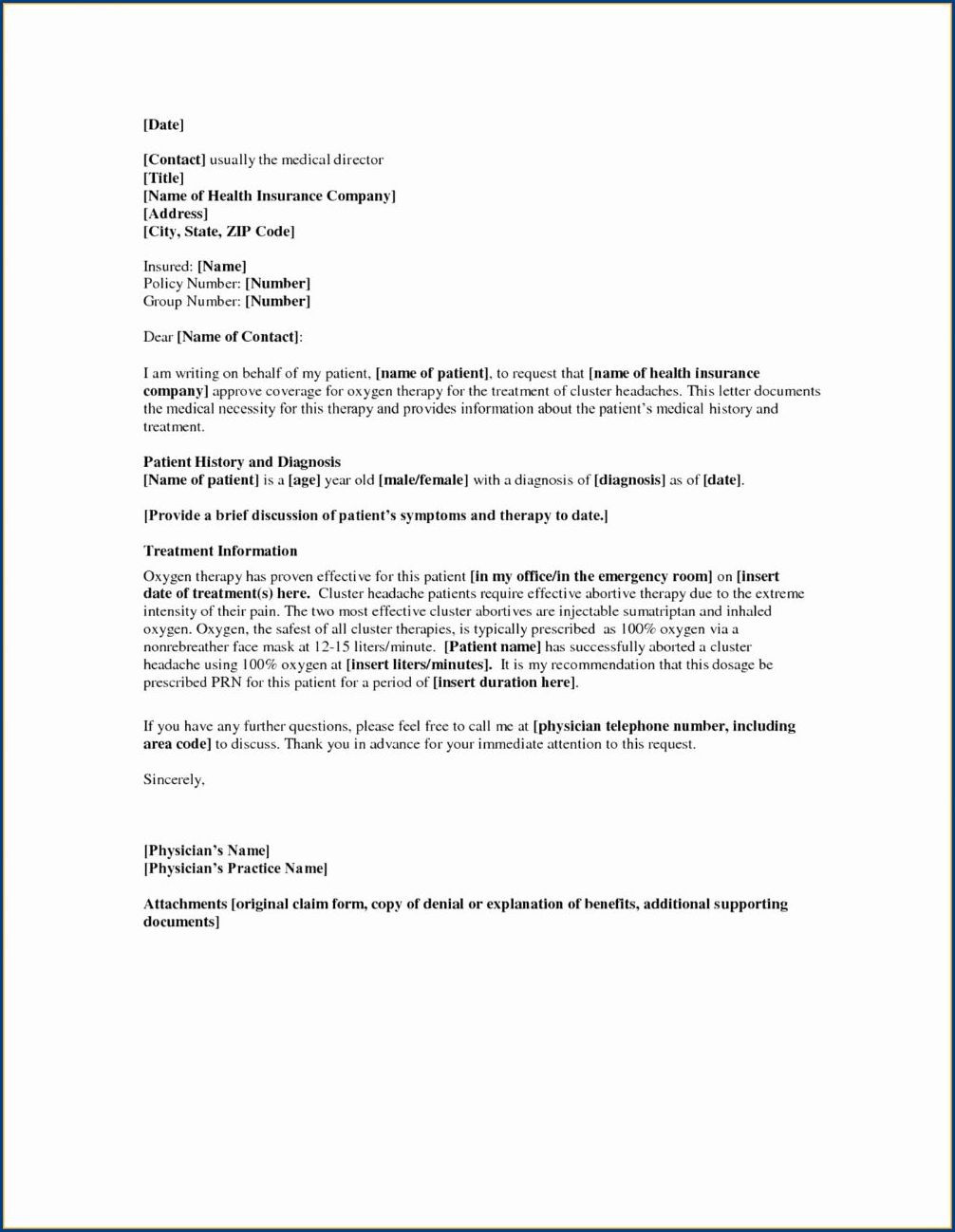
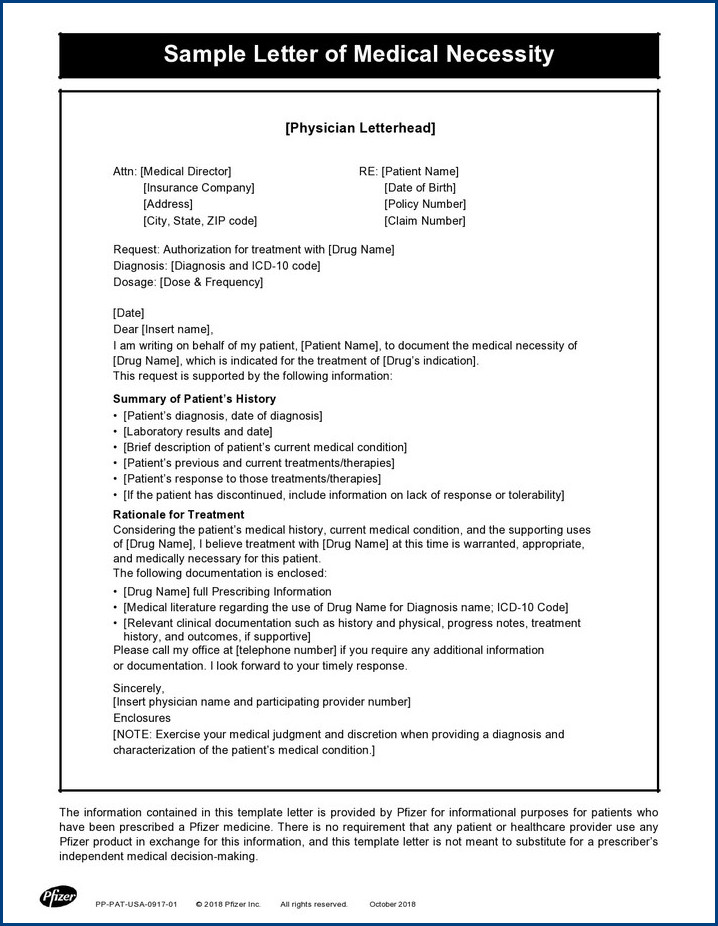
Can a physical therapist write a letter of medical necessity?
Yes, a physical therapist is qualified to write a letter of medical necessity. Physical therapists, being healthcare professionals, have the knowledge and expertise to assess and evaluate a patient’s condition and determine the medical necessity of a specific treatment or intervention. They can write a letter of medical necessity to support the need for physical therapy services, such as rehabilitation or therapeutic exercises, for their patients.
Tips to create a physical therapy letter of medical necessity
To effectively create a letter of medical necessity, consider the following tips:
- Include patient information: Begin the letter by providing essential details about the patient, such as their name, age, and medical history. This information helps to establish the context and relevance of the therapy.
- Describe the medical condition: Clearly explain the patient’s medical condition or injury that requires physical therapy. Include relevant diagnostic tests, imaging results, or medical reports to support the diagnosis.
- Specify treatment goals: Outline the specific goals and objectives of the physical therapy treatment. This may include improving mobility, reducing pain, increasing strength, or enhancing functional abilities. Be specific and measurable in defining these goals.
- Provide treatment plan: Detail the proposed treatment plan, including the frequency and duration of therapy sessions. Specify the types of interventions and techniques that will be used, such as manual therapy, therapeutic exercises, or modalities.
- Highlight expected outcomes: Emphasize the expected outcomes and benefits of physical therapy for the patient. This could include improved quality of life, increased independence, or prevention of further complications.
Creating a well-crafted physical therapy letter of medical necessity is crucial to ensure that insurance providers recognize the need for therapy and approve coverage. By following these tips, healthcare professionals can effectively advocate for their patients and increase their chances of receiving the necessary treatment.
Physical Therapy Letter of Medical Necessity | Word – Download